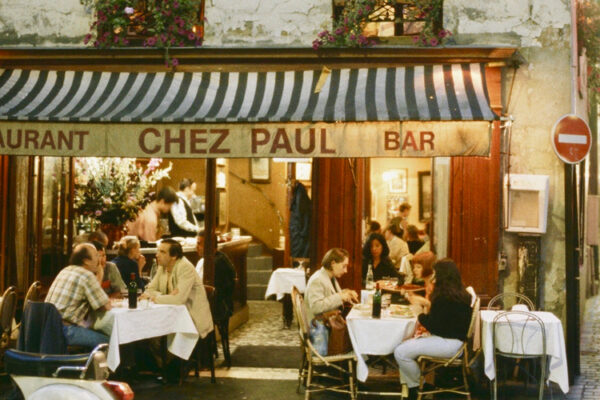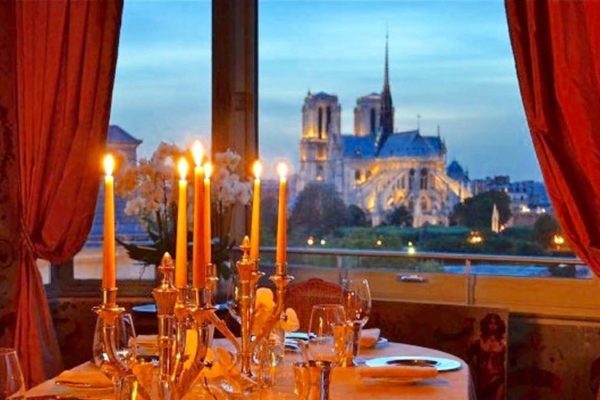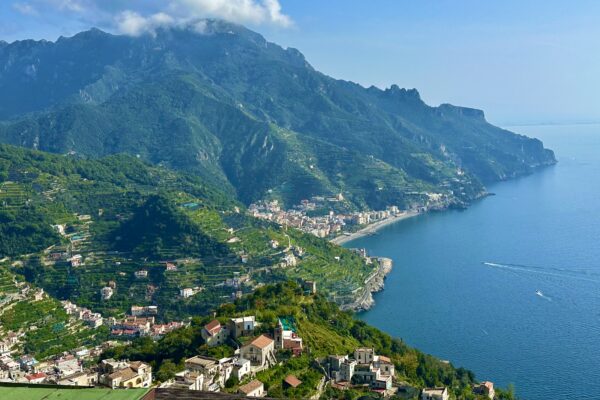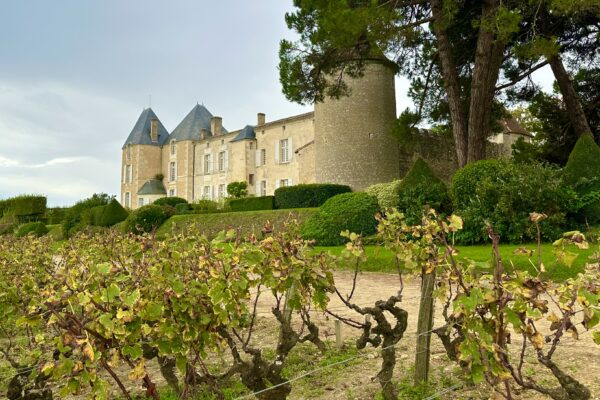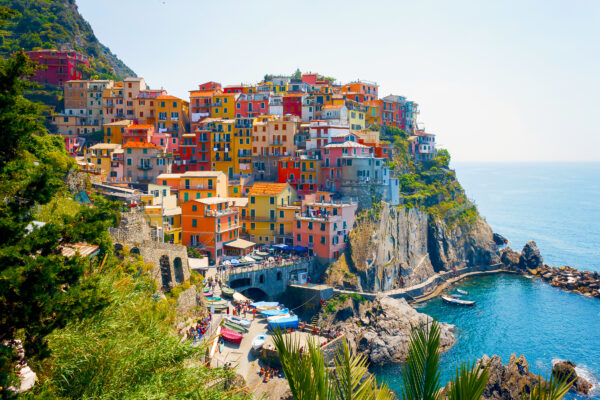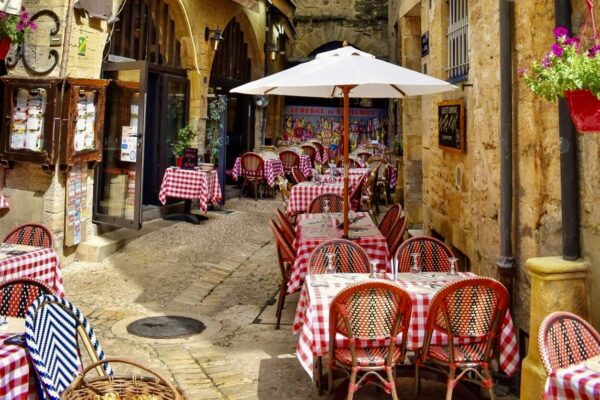Joséphine’s Gardens at Château de Malmaison
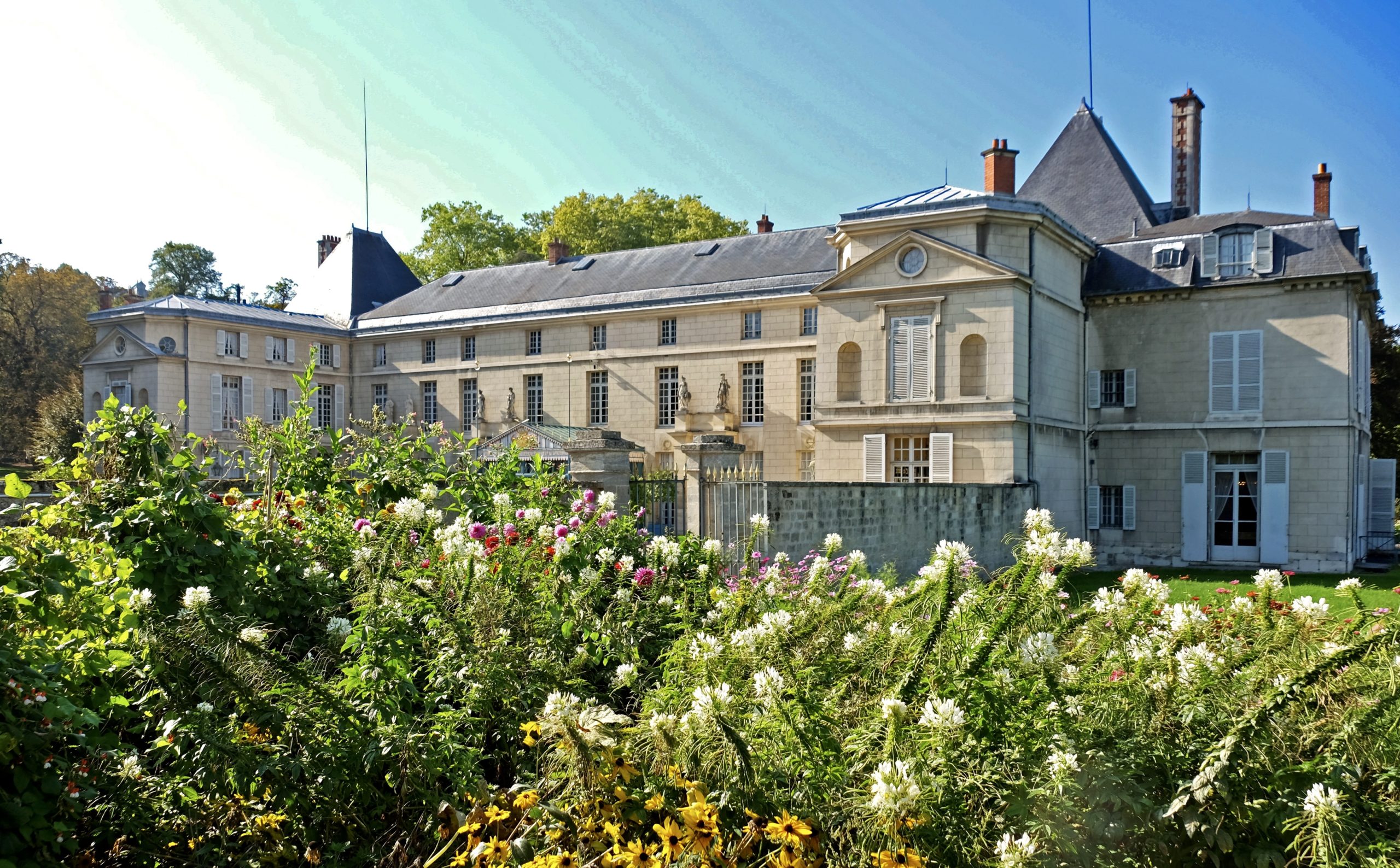
by Marla Norman, TCO Publisher
It seems only fitting that one of the world’s greatest love stories should have exotic roses as a centerpiece. Château de Malmaison, located just outside Paris, was the primary home of Napoléon and Joséphine Bonaparte. Their estate became renowned as the site of Europe’s largest rose collection, with over 250 species — all carefully supervised by Joséphine herself.
Marie Josèphe Rose Tascher de La Pagerie met Napoléon Bonaparte in 1795. The daughter of a wealthy plantation owner in Martinique, Joséphine was beautiful and worldly. She had emigrated to Paris when her family lost their estate in a hurricane. A widow with two children, she had even been imprisoned briefly during the aftermath of the French Revolution. At 32, she was six years older than Napoleon, who was 26.
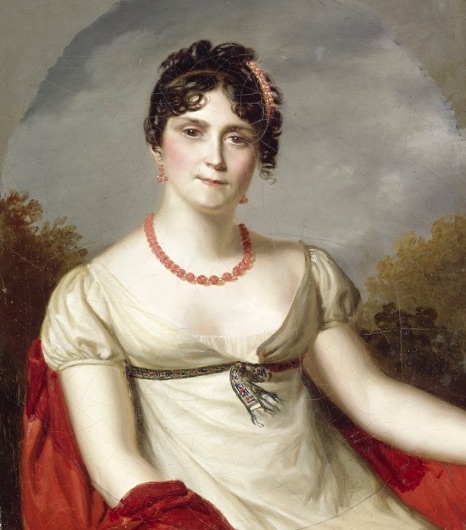
Portrait of Joséphine by Firmin Massot.
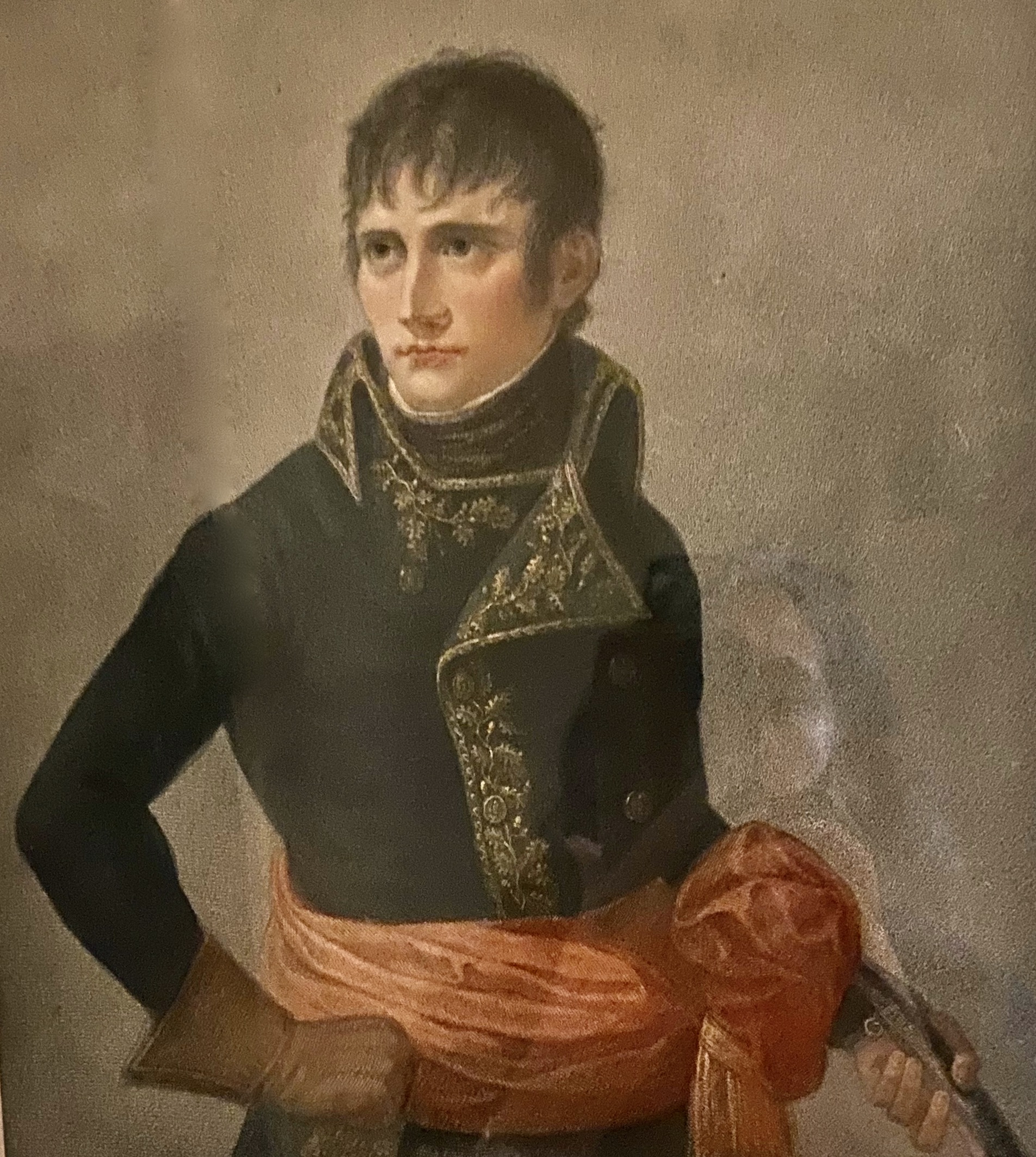
Portrait of Napoléon as First Counsel by Andrea the Elder Appiani.
By all accounts, theirs was a passionate encounter. In the first of many letters collected throughout their relationship, Napoléon wrote: “I awake full of you. Your image and the memory of last night’s intoxicating pleasures have left no rest to my senses.” (Napoléon’s Letters to Joséphine, Leonaur Oakpast, Ltd.) In 1796, Napoléon proposed and the two were married. Prior to their meeting, Joséphine had always used the name “Rose” but Napoleon preferred to call her “Joséphine” so she adopted that name from then on.
In 1799, while Napoléon was away fighting in Egypt, Joséphine discovered an old derelict estate on 150 acres, seven miles west of Paris. Immediately taken with the property, she paid over 300,000 francs — a small fortune at the time. Upon his return, Napoléon was furious with the purchase. Joséphine, however, managed to convince him that the property had potential. Charles Percier and Pierre Léonard Fontaine — young architects and decorators who would famously go on to help create the design style called Empire — were hired to renovate the house. Landscape artist Louis-Martin Berthault designed the initial gardens. (Musées Nationaux Napoléoniens – Malmaison)
Joséphine, meanwhile, began assembling an extraordinary collection of plants. She imported magnolias from America. Acacia, melaleuca and eucalyptus trees were imported from Australia. Peonies, hibiscus, camellias, and dahlias were all grown in France for the first time at Malmaison. An orangery housed 300 pineapple plants.
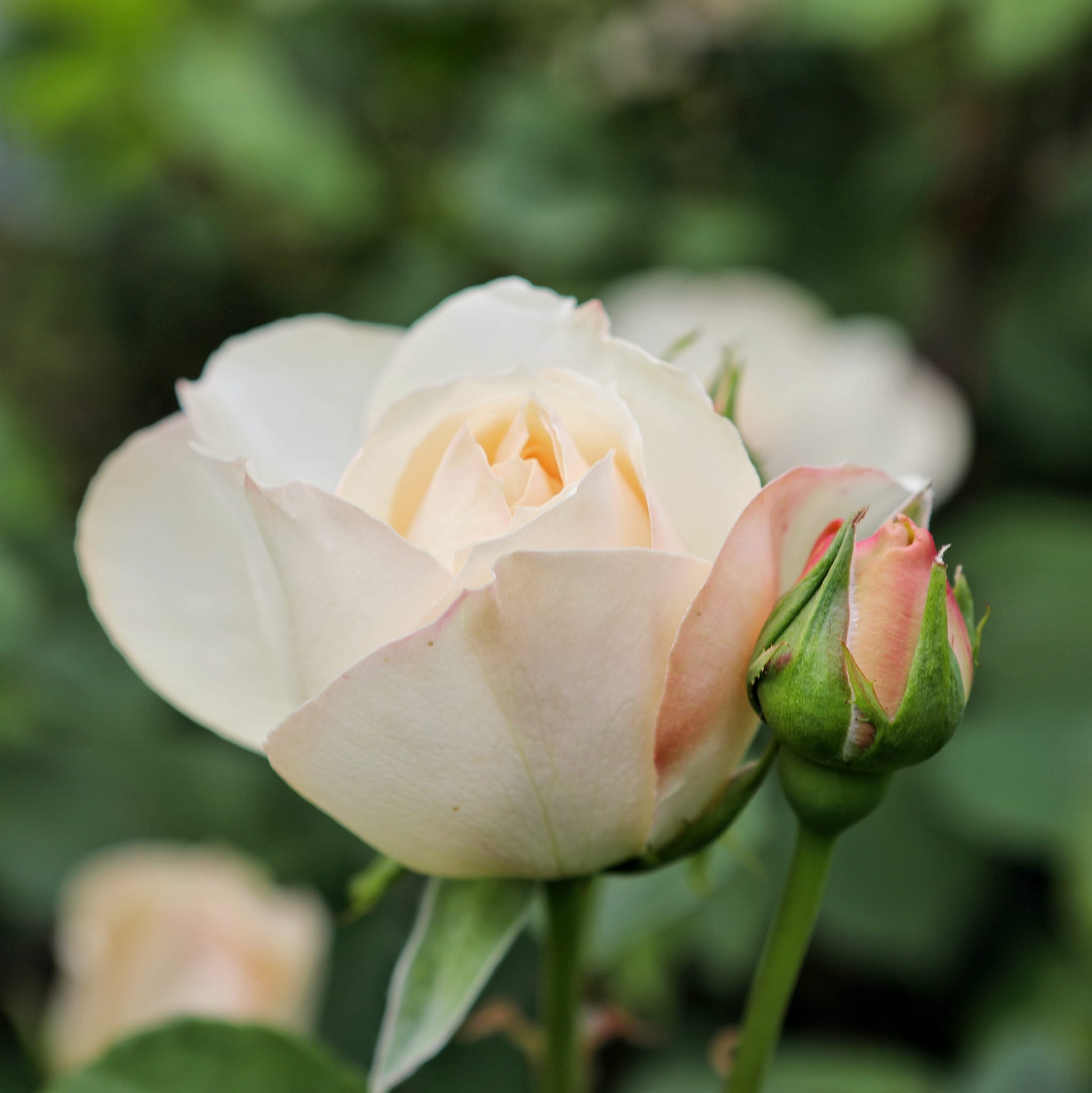
A few of the roses from from Joséphine’s garden.
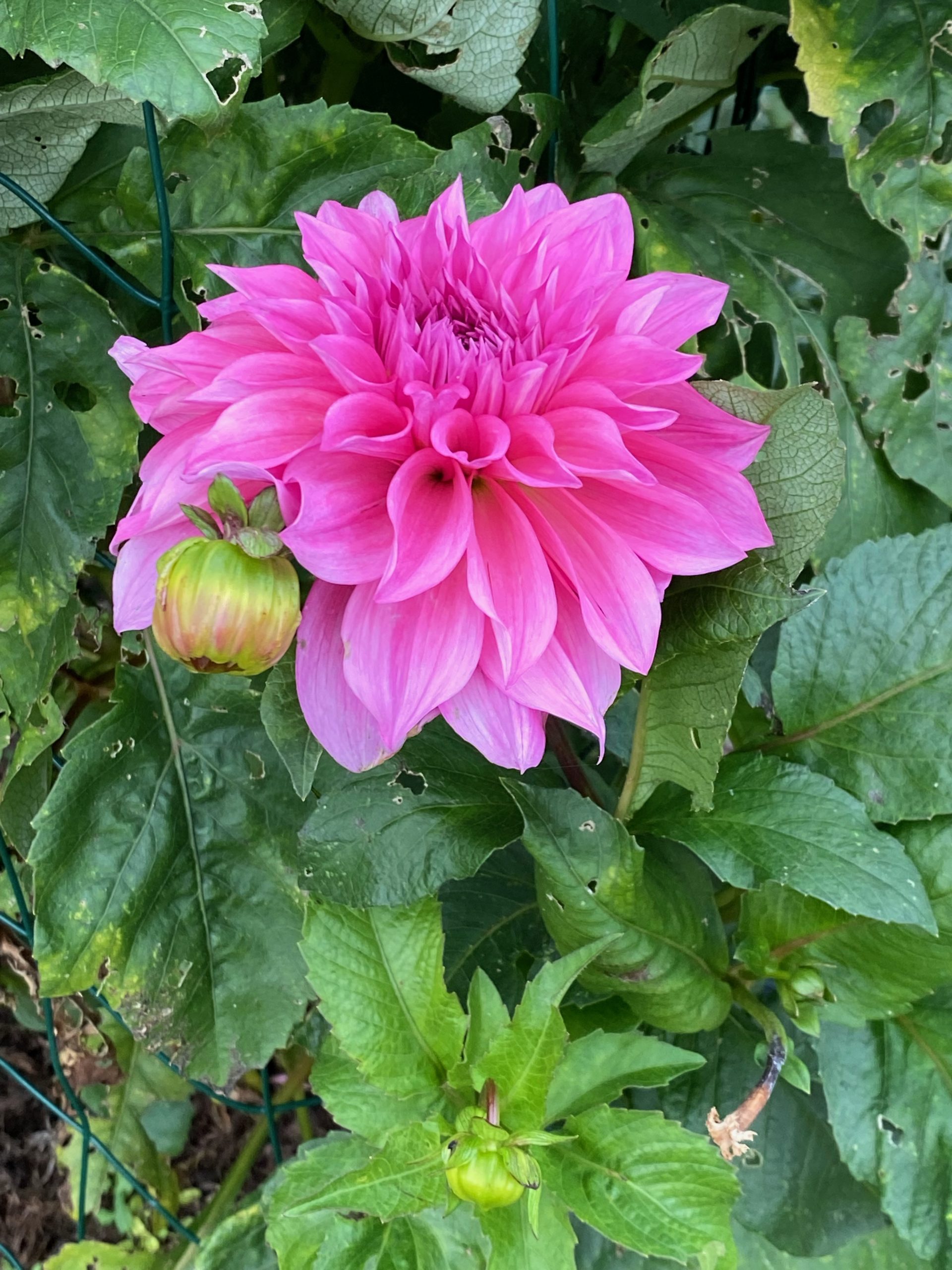
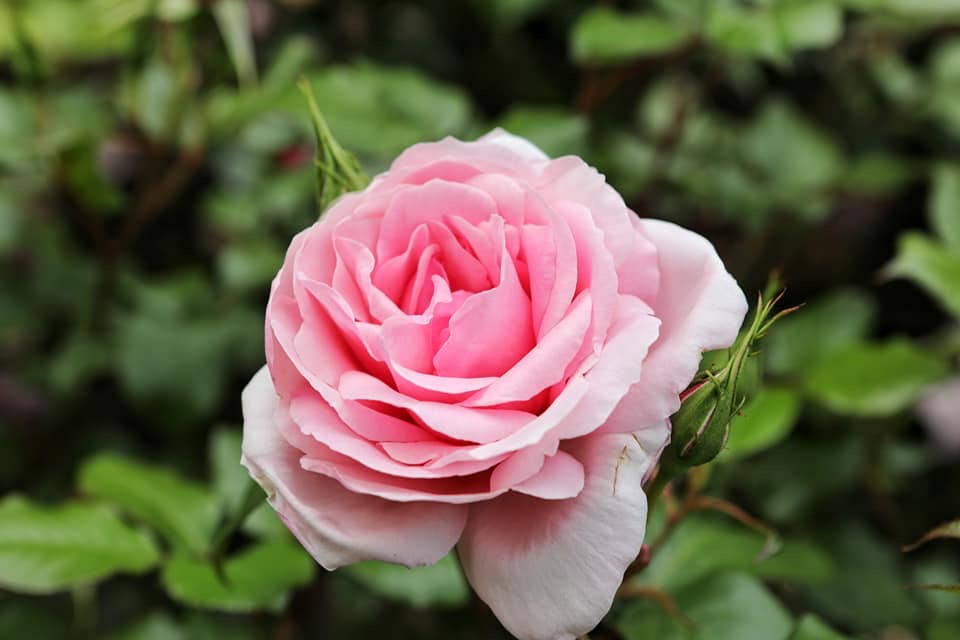
But Joséphine was especially devoted to roses. With over 250 species, the gardens at Château de Malmaison became the greatest and largest collection of roses in the world, unsurpassed until the creation of Sangerhausen in Germany and L’Hay outside Paris, one century later. And although Joséphine, as Empress, also had claim to the magnificent gardens of the Tuileries, Versailles and Fontainebleau — only Malmaison seemed to matter.
Being Empress had other advantages as well. The French Navy, at Napoléon’s command, was enlisted to confiscate any plants or rose seeds from ships at sea. Moreover, Joséphine’s purchases from the British nursery Kennedy and Lee were permitted safe passage through the naval blockade.
Aside from being the largest collection, Joséphine’s rose garden was important for other reasons.“The acquisition of Slater’s Crimson China, Parson’s Pink and Hume’s Blush Tea Scented China (through Kennedy and Lee) was of great importance for France, for they were among the country’s first new everblooming roses. Joséphine’s collection encouraged French hybridizers to develop new varieties. By 1830, some 2500 different rose varieties would be available to Parisian rose lovers, all influenced by Joséphine’s zeal for rose collecting.” (La Gazette Drouot, Art & Culture)
A GROWING DISCORD
While the gardens at Château de Malmaison flourished, the relationship between Napoléon and Joséphine became more tumultuous. Both were guilty of infidelities, particularly Napoléon, in spite of letters reaffirming his devotion to his wife: “What inclination stifles and alienates love, the affectionate and caring love you promised me? Who may this paragon be, this new lover who engrosses all your time, is master of your days?…Please write me immediately. Send the charming remarks that fill my heart with the pleasures of imagination. I hope that before long I shall clasp you in my arms and cover you with a million kisses as burning as if we were under the equator.” (Napoléon’s Letters to Joséphine, Nov. 23, 1796)
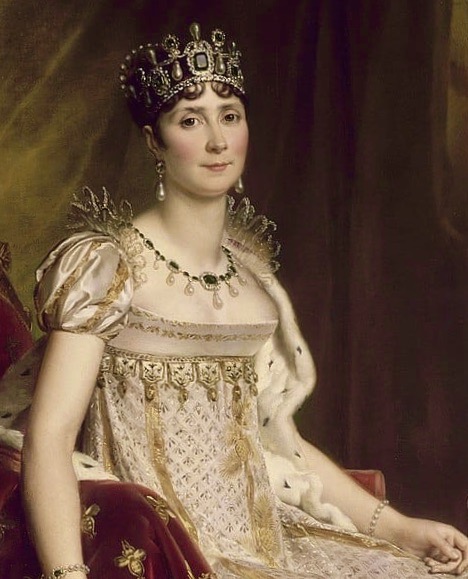
Portrait of Empress Joséphine by François Gérard.
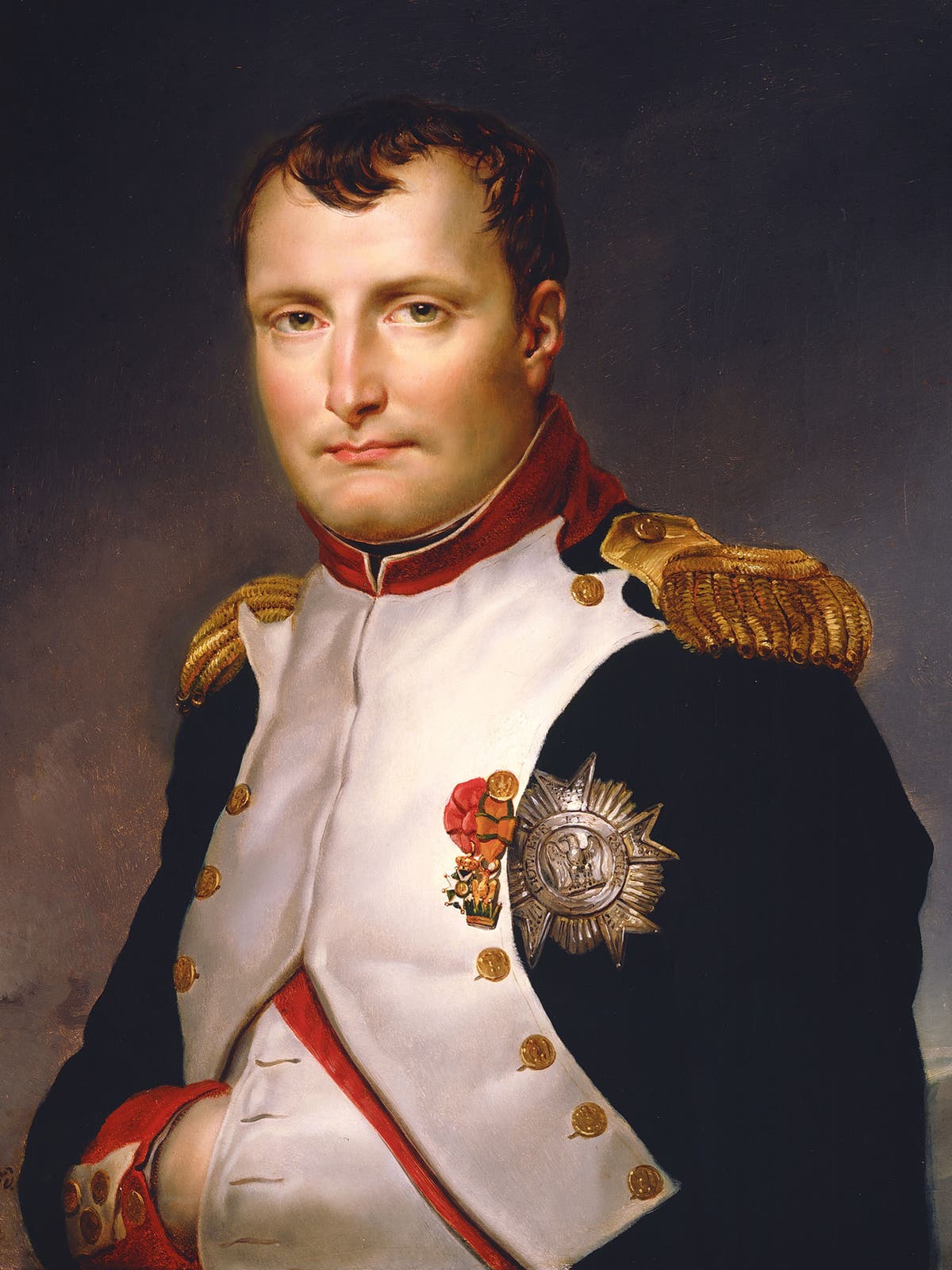
Portrait of Napoléon by Jacques-Louis David.
More problematic was Joséphine’s inability to produce an heir. To address this situation, Napoléon had named the child of his younger brother and Joséphine’s daughter, Hortense, as his official heir. However, when the child died, Napoléon felt he had no choice but to annul his marriage to Joséphine. Brokenhearted but resolved, Napoléon sent the following note to Joséphine. “You know I have loved you! To you and you alone I owe the only moments of happiness which I have enjoyed in this world. Joséphine, my destiny overmasters my will. My dearest affections must be silent before the interest of France.” (Napoléon’s Letters to Joséphine, Dec. 1809)
On March 11, 1810, Napoléon married Marie Louise of Austria, but ensured that Joséphine retained the title of Empress and her beloved Château de Malmaison. The Emperor himself, much to the irritation of Marie Louise, continued to visit Joséphine regularly at Malmaison. It seems that neither could give the other up entirely.
Arriving back in Paris after abandoning his army in Russia in 1812, it was to Malmaison that Napoléon hurried, arriving at midnight. After another defeat at Leipzig the following year, Joséphine wrote to him: “Although I may no longer share in your joys, your grief will always be mine too. I can no more resist the need to tell you this than I could cease to love you with all my heart.”
When Joséphine died in 1814, at age 50, Napoléon was in exile on Elba. Devastated, he locked himself in his room for two days, refusing to see anyone. When he escaped from Elba back to Paris, one of the first things he did was to visit Malmaison (Napoleon. Felix Markham)
In his last days, on the island of Saint Helena, Napoléon introduced two new plant specimens to remind him of Joséphine and Malmaison: the Sydney Golden Wattle (Acacia Longifolia) and the Australian Golden Everlasting Strawflowers (Bracteantha Bracteata). Both species survive on the island today.
VISITING CHÂTEAU DE MALMAISON
The Bonaparte’s house is filled with many of their possessions and numerous portraits. Stand in the paneled dining room and imagine exotic fare such as bananas and pineapples from the estate orangery presented on Sèvres porcelain dishes.
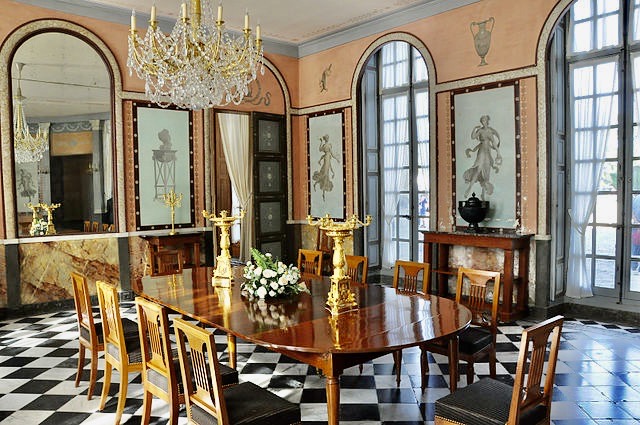
Dinning room at Château de Malmaison.
Move on to the library which still contains some 500 books, monogrammed with the letters “BP” for Bonaparte. Next door is the Salle de Conseil where the Emperor met with advisors summoned from Paris. The walls and ceiling are hung with striped twill to resemble the inside of a military commander’s tent. It was here that Napoléon created the Légion d’Honneur, France’s highest order of merit, and worked on the Code Napoléon, France’s first legal framework, still in use today.
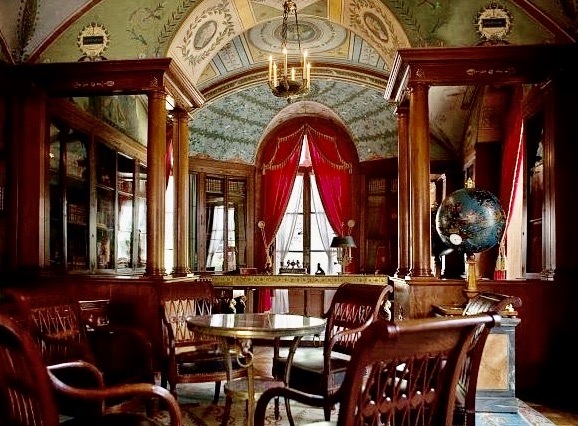
Napoleon’s library still contains some 500 books, monogrammed with the letters “BP”.
Upstairs, Empress Joséphine’s bedchamber is sumptuously decorated in red and gold and contains her original curtained bed, with gilded bedposts carved in her favorite swan motif. A second bedchamber, dressing room, boudoir and wardrobe room are linked to another grand passion in her life: fashion.
A never-ending stream of dress-makers, milliners, parfumiers and jewelers visited her here, all greedy for some of her seemingly unlimited budget. In one year alone she is known to have bought 136 gowns, 520 pairs of shoes and 985 pairs of gloves. (The Empress Josephine, Napoleon’s Enchantress. Philip Sergeant)
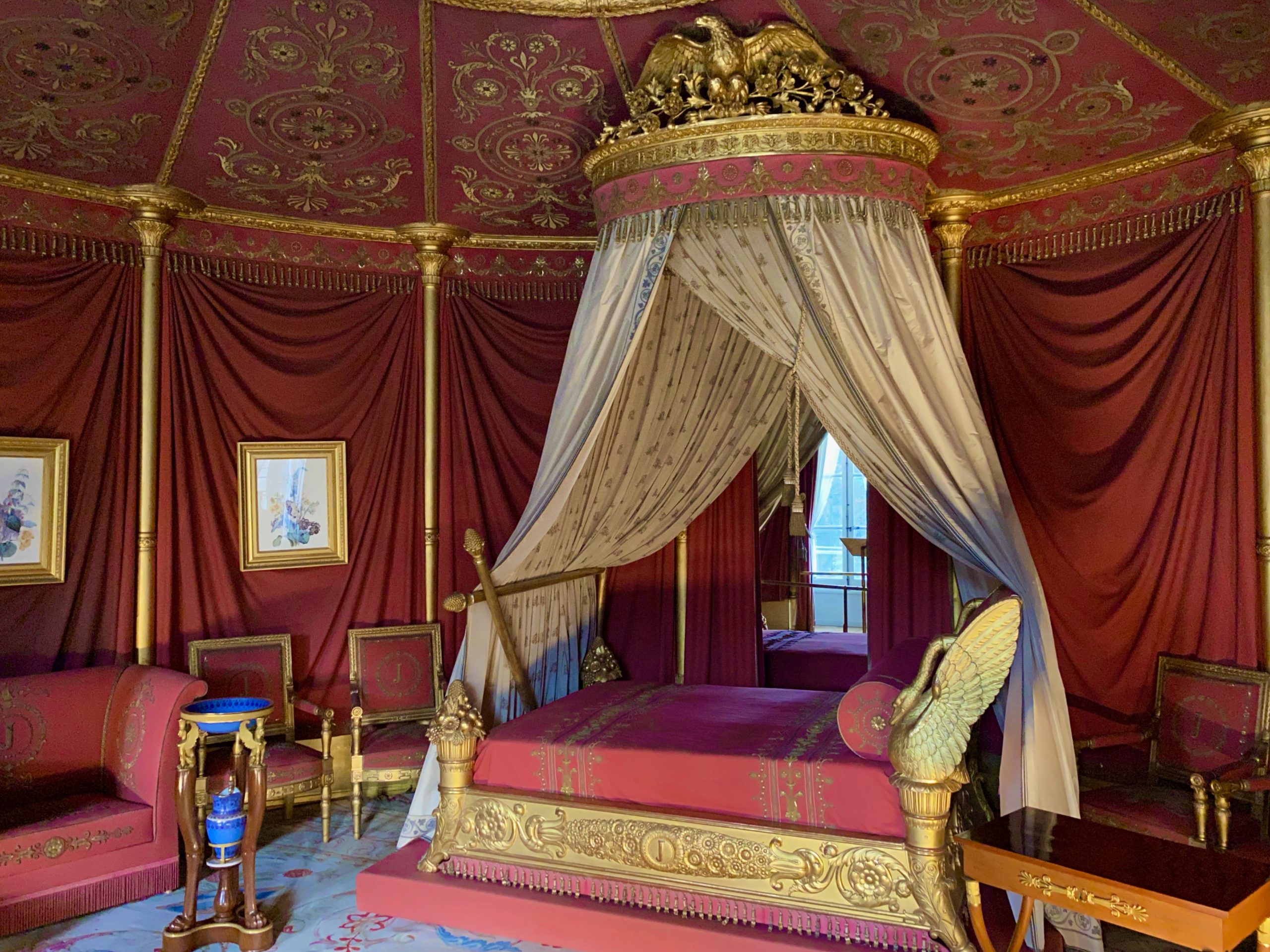
Joséphine’s curtained bed, with gilded bedposts carved in her favorite swan motif.
The Arms Room is dominated by the Jacques-Louis David painting, Napoleon Crossing the Alps, featuring the First Consul of France, astride a rearing horse. Here too is the Austerlitz Table, commissioned by Napoléon himself to commemorate another of his great victories.
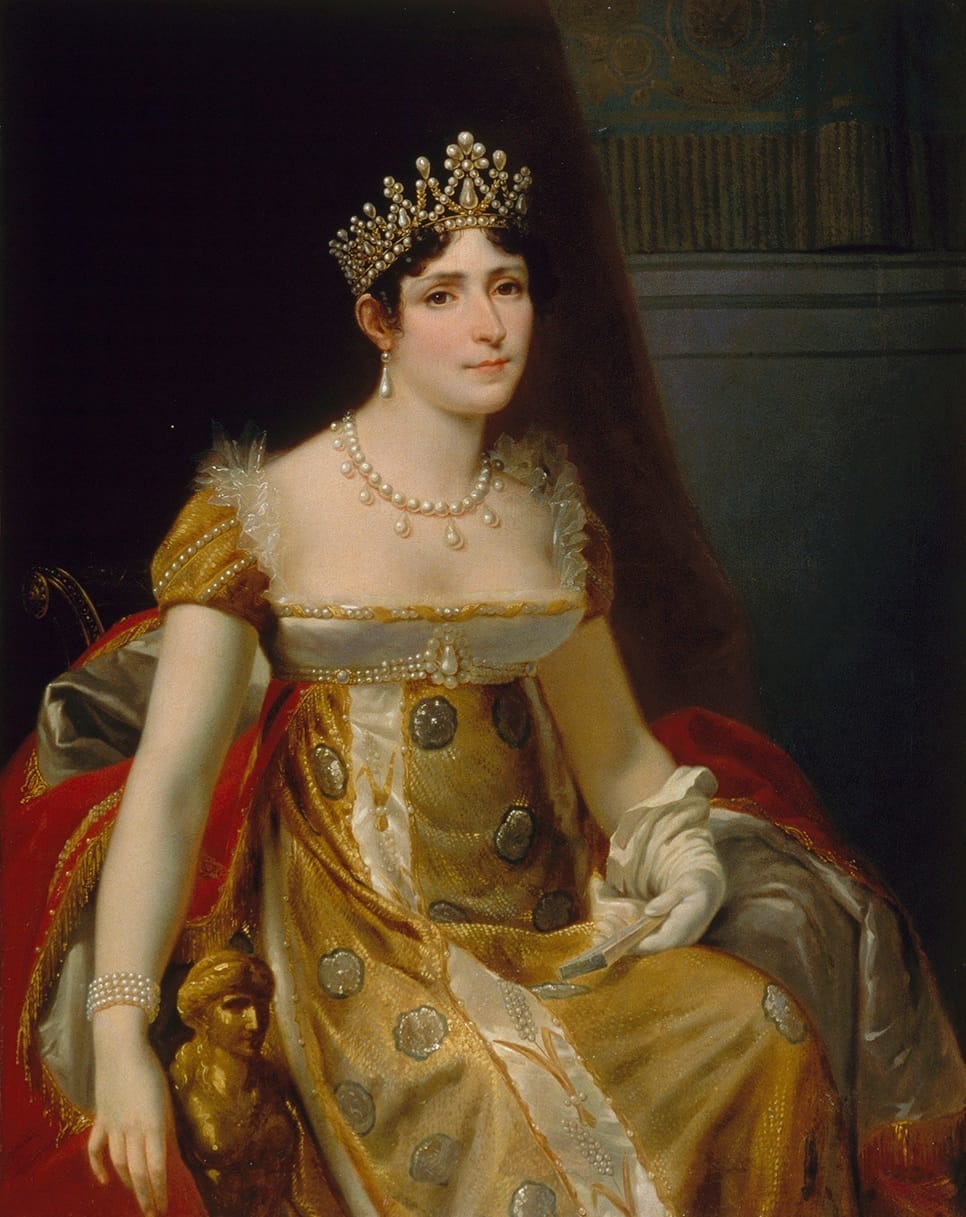
Portrait of Empress Joséphine by François Gérard.
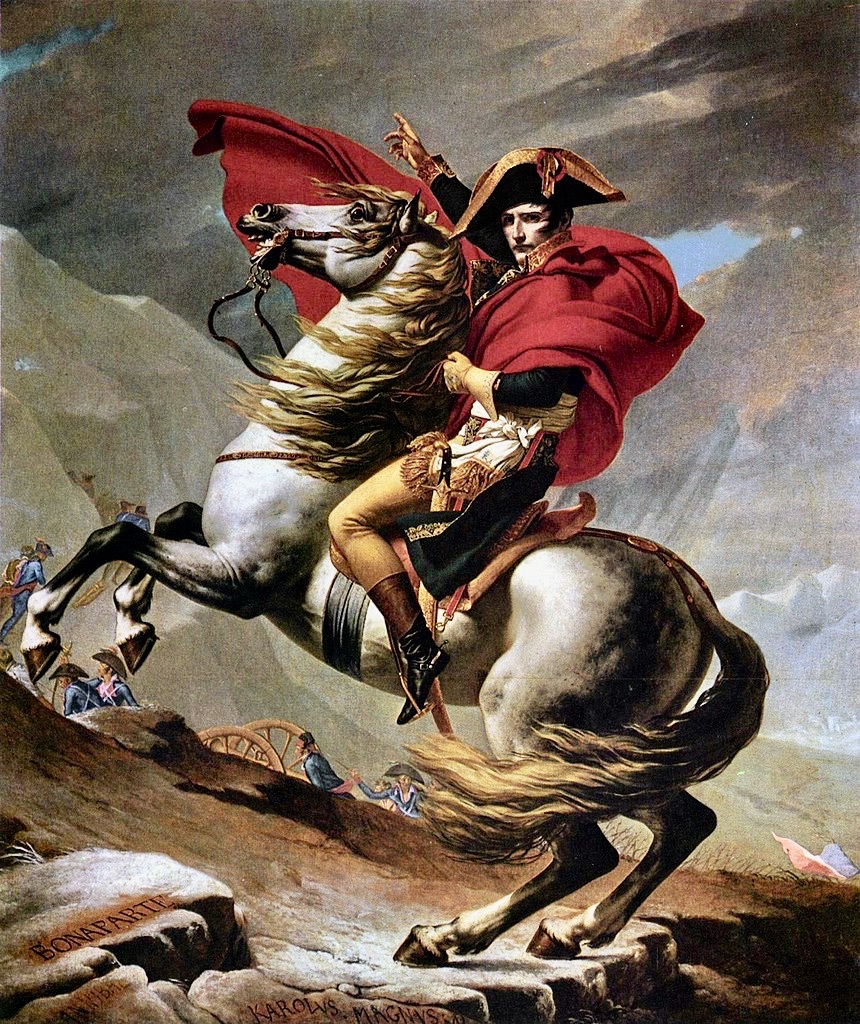
Napoléon crossing the Alps by Jacques-Louis David.
Sadly, the legendary gardens have been gone for some time. Much of the property has been sold off and only six acres remains. Still, enough of the original roses, dahlias, camellias, and spectacular trees remain. It’s easy to envision the two lovers strolling the shady paths — forgetting for a moment affairs of state, anguishing responsibilities, pending crises. Lost in each other’s company they could escape to another space and time.
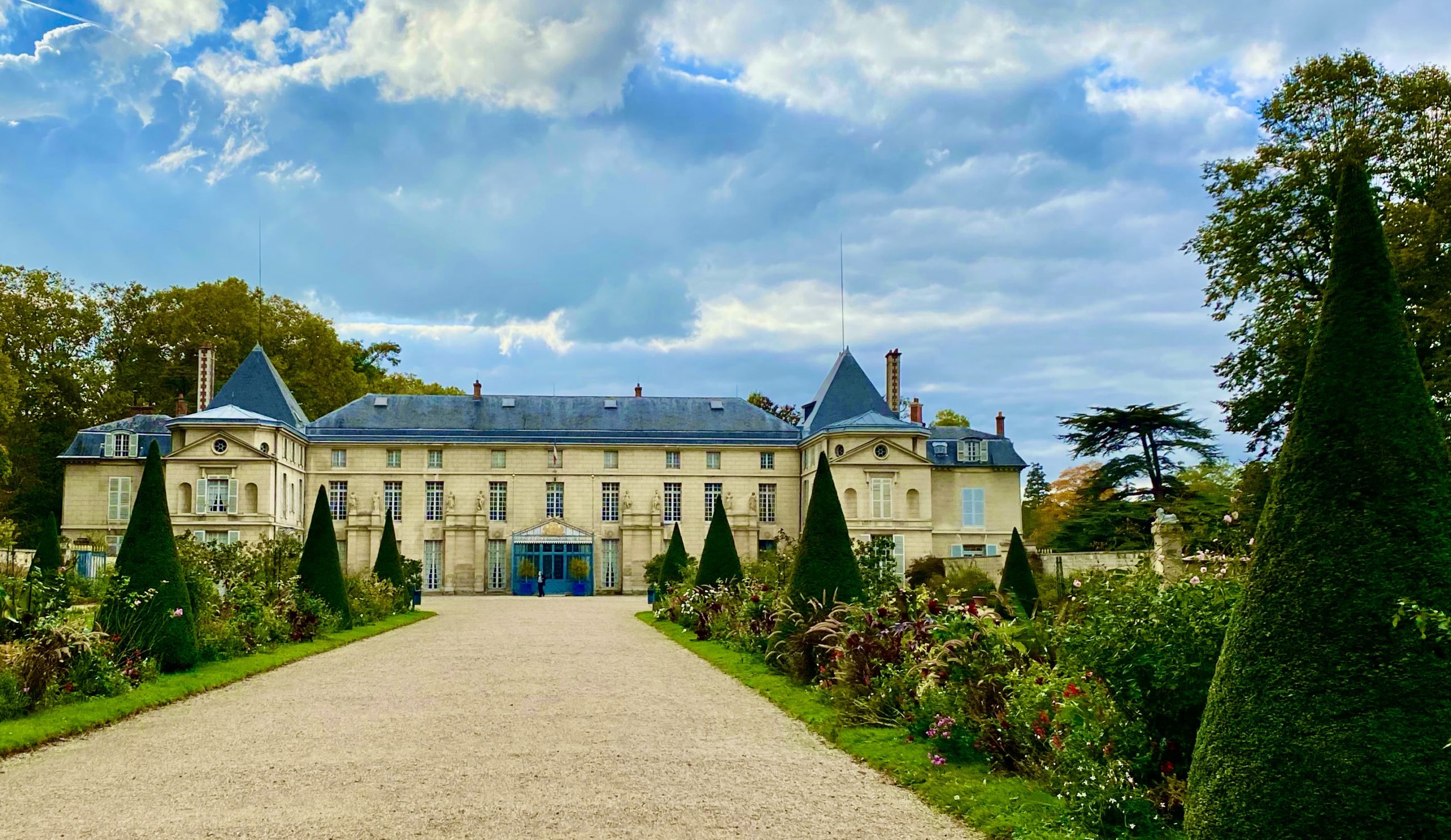
Main entrance to Château de Malmaison.





